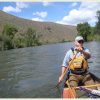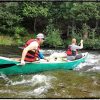Canoeing Down the Cowlitz River in Washington State on July 4th: More than We Bargained For
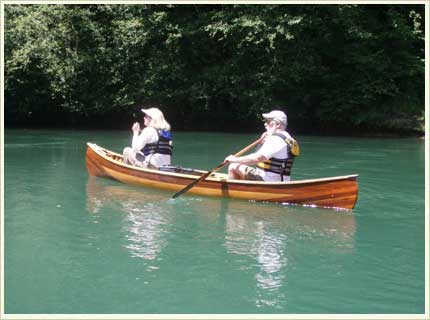
TRIP LOG: Submitted by Greg Paris, July 5, 2009
Over the winter, we purchased a 2004 American Traders Feather and I modified it to be a dual-purpose canoe. It can be used as a trolling motor-powered cruiser, or as a normal canoe. The lightweight cedar and ash Feather weighed 49 pounds when we got it and with the wiring, battery holddowns, and contoured cane seat modifications I made, it still weighs only 51 pounds when used as a canoe. It weighs considerably more when used as a “motorcanoe”, around 110 pounds, but I’ve made provisions for easy portage and assembly that make it a breeze to run this way. We cartop it at 51 pounds, throwing the “heavy metal” in the back of the SUV until it’s needed.
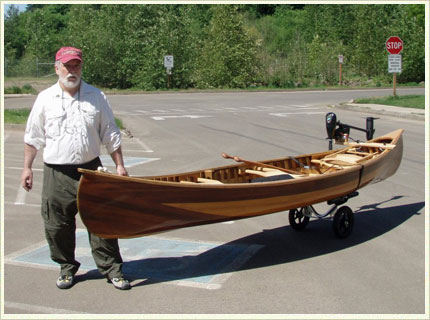
All photos courtesy Greg Paris.
The Feather is 14’3” LOA, has a 36 inch beam and a shallow V hull. It has full and half ribs of ash. The exterior is a blend of Western Red & Eastern White Cedar. We have had lots of positive comments about the looks of the Feather on the trips we’ve made this season. Most people ask if I had built it from scratch and I’m often tempted to tell them I had, but I come clean and say I’ve only modified it.
My wife and I had taken the Feather out a few times in a large slow river (The Willamette) and a nice man-made reservoir (Mayfield Lake & river) as a motorcanoe with great success. It runs up to 5 knots in 5th gear with its Minn Kota Endura 30 trolling motor. Now it was time to try it in its original configuration.
On the 4th of July, we took out the Feather as just a canoe…no battery or motor. We ran the Cowlitz River from the dam at the Salmon Hatchery north of Toledo, WA, to Interstate 5.
View Cowlitz River July 4th Paddle in a larger map
We went on the trip with our daughter, son-in-law, and 5 year old granddaughter in their flat-bottom keel-less 17 foot Old Town Discovery 174.
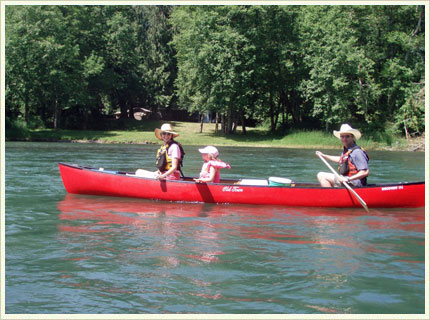
The trip was billed by our son-in-law (he’s adventurous, late 30s fit guy) as a 2 to 3 hour calm run of about 12 miles with no white water. He had surveyed the stretch early in the week and asked locals who claimed “no white water”. Unfortunately, the normally cool region and surrounding mountains received 90-100 degree temperatures between Monday and Saturday prior to our trip. This caused rapid snowmelt and added significant amounts of ice-cold water to the Cowlitz. None of us realized this as we launched.
The run took us 5 hours, which included 3 stops, for a total of about 40 minutes. It was a full 20 miles. We soon realized after the launch that the trip would also be challenging. About every half mile, the relative silence was interrupted by the sound of water running over rocks.
There were at least 20 riffle/rapid sections, which were probably categorized as class I and one as class II. The river had lots of mountain snow melt and was running at or above 4 mph. Prior to this trip, we were relatively inexperienced at river running. Now that we have survived, I contend that we can handle much more than before the outing.
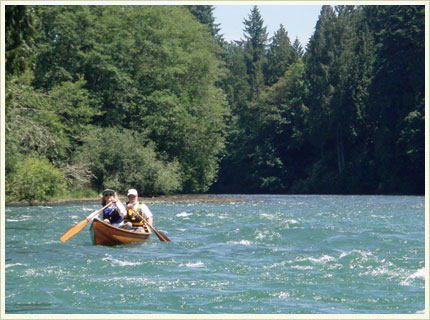
Typical rougher water. Notice our Ottertail paddles from Sawyer. They are lightweight and matched the Feather in appearance. They are a short 52 inches in length and for this trip, I wished they had been 54 or 56 inch beavertails. At just over 14 feet, the Feather seemed shorter than we wanted for this type of water.
One of our stops was for removing the water we’d taken on running a rough rapid. We almost turned the Feather over once in 2 feet swells and lots of side current. I’ll show you where…see the Serious Water tag.
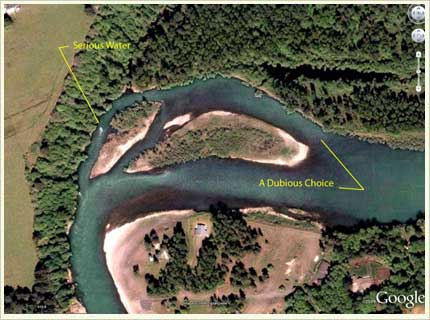
The Cowlitz has several diversion “islands” which split the 200 foot wide river into two parts. After a few hundred yards, the river reforms each time. If you pick the smaller size path, the water is deeper, but faster and more unsafe. We took the unsafe choice only once, by taking the northern fork and ending up in a rapid section. The grey gravel beach afforded us an opportunity to regain our composure and lighten the Feather. This kind of stop (see below) scratches the bottom every time. After our near capsize, we stopped and both canoes were inverted to pour out 2-3 inches of water in the bottom of the hulls.
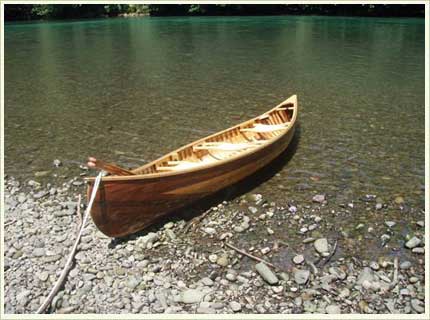
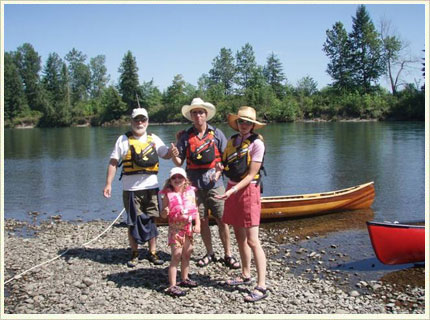
Snack stop. It was 90 degrees for most of the trip. The blue “skirt” below my shorts was my son-in-law’s extra shirt, which I used to keep the hot sun from frying my knees and lower legs. Even with PSF 50, I got baked. Must have missed a few spots with the sunscreen.
When the water was calm and slow moving, it really was a pretty run. Bald eagles were common sites fishing, and nesting high in the evergreen trees that lined the banks.
I think this trip pressed our skills more than we would like and we’ll probably not try one like this again soon. Reservoir/lakes, with slower moving river inlets will be our speed.
On the other hand, since we survived, the trip is becoming more fun in our memories than when we were in the roughest water, struggling to keep afloat.

Copyright © 2009
Greg Paris



